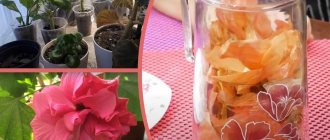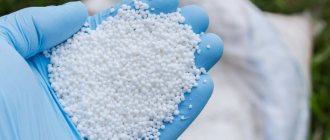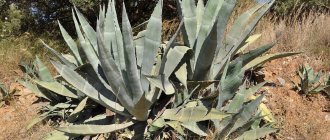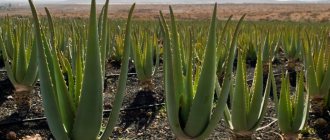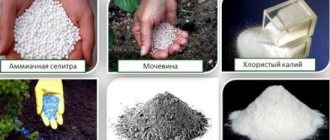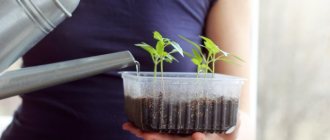To stimulate the growth and maintain the health of houseplants, most gardeners use aloe juice. Using this herbaceous perennial plant, you can prepare a highly effective fertilizer, which contains valuable microelements and vitamins. Aloe is a succulent plant that has more than five hundred species in its genus, the most common of which are: tree-like (“Aloe vera”) and true (“Agave”).
Why is it useful?
The juice of the perennial aloe vera triggers vital processes in the cells of other plants. This natural fertilizer has powerful bactericidal properties that protect plants from infection.
Potassium contained in the plant promotes the absorption of carbonic acids. Magnesium - regulates the process of photosynthesis. Thanks to aloe, the complex of physiological stages of plant life, including the development of the root system and flowering, proceeds more qualitatively and productively.
Japanese strawberries for 147 rubles for growing at home (advertising)
Features of the plant
Alloe is a popular tree-like plant belonging to the Liliaceae. The height of an evergreen plant can reach a height of 4 m. A distinctive feature is the presence of spreading and erect trunks with a sufficiently large number of leaves. South Africa is considered the birthplace of the culture. However, aloe is also found in other regions of the world: the Arabian Peninsula, as well as in Mexico.
There are about 350 varieties of aloe around the world. As for our country, aloe vera is found almost everywhere, be it in a house, apartment or office. The main feature of the plants is their unique properties due to the presence of juice, which contains many vitamins and beneficial elements. Aloe has excellent bactericidal properties that help activate life processes.
Composition and release form
| Liquid | 100 ml |
| juice from biostimulated leaves or “children” of aloe vera | 80 ml |
| ethanol | 20 ml |
in dark glass bottles of 50 ml; 1 bottle in a cardboard pack.
| Syrup | 1000 g |
| freshly prepared 20% solution of ferrous chloride | 135 g |
| food grade citric acid | 4 g |
| diluted hydrochloric acid | 15 g |
| aloe vera syrup | up to 1000 g |
in dark glass bottles of 100 g; 1 bottle in a cardboard pack.
| Liniment | 1 ban. |
| Aloe vera juice | |
| Eucalyptus oil | |
| Castor oil | |
| excipients: emulsifiers |
in dark glass jars of 30 g; in a cardboard pack 1 jar.
| Film-coated tablets | 1 table |
| crushed preserved aloe vera leaf | 0.05 g |
in a blister pack 10 pcs.; 2 packs in a cardboard box.
Aloe propagation methods
Succulents are propagated in several ways. The most common of them is obtaining new plants from root suckers and cuttings. The simplest method is to plant the children while transplanting aloe plants that grow from the roots.
Flower growers often practice rooting cuttings - stem and apical, as well as a separate leaf. It is important to dry the planting material for several days in a dimly lit place with a moderate temperature, otherwise the cuttings will rot and will not form roots.
Dried shoots or tops are buried in damp sand and watered moderately until it becomes clear that their root system has successfully formed. This is evidenced by young leaves appearing at the end of the cutting or at the base of a separate aloe leaf buried in the soil.
The seed method of propagating aloe is not used as often as cuttings. The seeds are laid out on top of a soil mixture consisting of 2 parts river sand and 1 part rotted leaf soil, and only lightly sprinkled on top. The bowls with crops are covered with cellophane film or glass and regularly moistened, not forgetting to ventilate. Shoots appear in a week or a week and a half; they are planted in the phase of 2-3 leaves into independent flower containers.
Aloe on the lawn
One of the largest representatives of this group of plants is familiar to everyone, because it is aloe. Most housewives tend to think that this is an exclusively indoor flower. But if there is a bright area on your lawn that you don’t mind transforming into a flower bed, decorate the area with grouped low-growing rosettes of succulents. By combining Aloe aristata with other representatives of this group, you will be surprised at what a beautiful soil cover you will get.
Organic fertilizers for aloe
To feed the agave, fertilizers of mineral and natural origin are used. At the same time, the latter, due to better digestibility of nutrients, are preferable to use. For aloe, the following organics and folk remedies are used:
- humus - it contains nitrogen and potassium, it is applied once in the spring when watering, and is also used when replanting;
- wood ash – has a balanced composition, optimal for succulents;
- dried and crushed eggshells - reduces soil acidity;
- onion peel – destroys larvae and pests.
Humus Ash Shell Husk
Rules for preparing aloe raw materials for beneficial use
There are many factors that must be taken into account in order to create an effective drug.
- Plant age. The most suitable plant for the manufacture of any medicine is considered to have a three-year growth period. The older the aloe, the more beneficial it is. The five-year-old flower is especially valuable and rich in nutrients.
- Creating a period of artificial dehydration. One or two weeks before the planned date for removing the leaves, stop watering the plant, much less feed it. You cannot add moisture and nutrition during the preparatory period, as this will significantly weaken the therapeutic effect of the future drug. Aloe itself will prepare the green mass for processing, and the lack of moisture will be a signal that the leaves will be quickly removed.
- Removing leaves. Leaf blades cannot be cut from the trunk of a plant. The lower leaves, slightly dried out at the ends, are carefully removed from the trunk by pulling them together. Thus, the leaf is not injured, the leathery shell is not damaged, there is no access to the pulp, and the juice does not leak out.
- Processing aloe foliage. After removal, the aloe leaves must be rinsed under running warm water, dried and placed in a dark plastic bag. So the leaves are stored on the bottom shelf of the refrigerator for 5 to 7 days. After the expiration date, the aloe needs to be removed from the refrigerator, removed from the bag and placed on a towel to “rest” and warm the leaf plates at room temperature.
- Peeling. To prepare the green mass, the leaves must be crushed, and to obtain the purified pulp of the plant, the leathery surface must be removed. Thus, you cannot do without using a knife. But, when iron comes into contact with the juice of succulents, there is a complete loss of vitamin C on the cut and the adjacent leaf area. Therefore, cutting, cutting spines along the leaf blade and cleaning the leathery surface should only be done with a ceramic or plastic knife.
- Tools at hand. The juice is obtained by squeezing through a gauze or linen bag. The leaf plates are crushed and cleaned with a ceramic knife. Store the resulting juice, pulp, crushed leathery surface or already prepared preparation in a glass container in the refrigerator.
Using a meat grinder, blender or juicer will significantly deteriorate the quality and usefulness of the final product, since the product will inevitably come into contact with metal parts of kitchen appliances.
About the benefits of biogenic growth stimulants
First of all, drugs of natural origin and absolutely safe from an environmental point of view activate metabolic processes and strengthen immune properties. They are distinguished by high biological activity without pronounced side effects. Biogenic stimulants remain an important component of such drugs. This substance means a specialized complex based on compounds of organic origin.
The interaction of biogenic stimulants promotes the activation of metabolic processes, which has a beneficial effect on cell regeneration, and there is an increase in adaptive capabilities . Thanks to all of the above, there are simply limitless possibilities in terms of use as biostimulants. If we talk about agriculture, then biological stimulants are the key to successful and active growth of the root system, which determines its early flowering, as well as plant fruiting.
The main advantage of using biogenic stimulants is that they are easily tolerated by absolutely beloved living organisms, since they contain a huge amount of low-toxic components that are not addictive. Aloe vera juice has become incredibly widespread throughout the world.
Real life practice has shown that aloe sap, exposed to low temperatures and kept away from sunlight, promotes the germination of root cuttings and seed germination.
Freshly squeezed juice slows down the growth of the root system, and in some cases can cause the death of the plant.
How to prepare an organic stimulant based on aloe juice
An organic growth stimulator for plants can be prepared with your own hands and at home. To do this, just use regular aloe juice. To prepare an organic stimulant, first of all, you should cut off a few leaves (it is better to take those that are at the base of the plant).
Experts strongly recommend using not only old leaves, but also young ones.
Note! Old leaves contain much more useful elements when compared with young ones.
After this, the leaves are wiped with a piece of cloth; they must first be moistened in warm water or simply rinsed under running water. The ingredients are placed in a saucepan or small plate.
Experts strongly recommend using utensils with high edges, which will eliminate the risk of liquid splashing during operation. In a small mortar they are crushed until a homogeneous consistency is formed. Next, you need to take 250 ml of running water and add 1 tablespoon of the consistency to the water. The composition should be prepared additionally: it is covered with a lid and placed in a dark and cool place.
After 7 days, it is recommended to dilute the consistency with water so that about 5 liters of liquid are obtained. Before adding, the liquid must be thoroughly boiled and cooled to room temperature.
Only after this do they fertilize the plants, bulbs and cuttings. The average soaking time does not exceed 5 hours. Only after this can the seeds or cuttings be planted in the soil; no rinsing with water is required. After some time, you will be pleasantly surprised by the growth results.
Aloe conditions
The succulent is very light-loving. The most illuminated place in the apartment is chosen for it, as a rule, it is the window sill of a south window. The plant is not even afraid of direct sunlight, under which its leaves acquire a slightly pinkish tint or have a bluish coating.
Of course, it is still better to protect it from strong sunshine in 30-degree heat, but an air temperature of 22-26 degrees above zero is quite comfortable for aloe. However, the flower prefers to tolerate dormancy in winter in cooler conditions - approximately 16-18 degrees Celsius, not lower than 10 degrees. The cooler the room where the aloe is located, the less often it needs to be watered.
Growing aloe
After the aloe is transplanted outdoors or into pots, it needs to be provided with simple care.
Watering
Aloe does not require much water, but in the hot season it is necessary to water it, albeit sparingly. Avoid getting the leaves wet and it is advisable to use warm water to avoid irritating the roots with low temperature shock.
Fertilizer
There are special fertilizers on the market for succulents, often mineral ones, but aloe grows well and remains healthy even with regular manure used in the garden. Every year you can add a little of it to the soil, regardless of whether the plant is in open ground or in pots.
Protection from diseases and parasites
Aloe can be damaged by scale insects and mealybugs, in which case you need to spray the damaged parts with fern extract or mineral oils.
However, if plants turn brown, it is likely due to root rot combined with cold weather. This is why drainage and cover during rainy and cold seasons are very important.
Aloe vera propagation
As mentioned earlier, aloe does produce a lot of suckers that need to be removed so as not to weaken the mother plant.
In fact, in the pot around the main plant you can find dense thickets of young aloe plants that have grown and are trying to fill the entire space of the pot. But in such a form that they are destined to remain small and lifeless. Therefore, ideally, you need to take the shoots and transplant them each into a separate container or temporarily even 3-4 together, but with provision for replanting in the future.
The best time for this is summer with the optimal temperature for this species.
Growing in pots
Growing aloe in pots is very common and allows you to bring the plant indoors in winter to protect it from the cold. This also applies during very rainy periods.
For soil, you can choose a good all-purpose soil or a special succulent soil, which is usually lighter and better draining, and in both cases add good mature compost to the soil.
Irrigation should be moderate but regular.
Aloe feeding
Like any other plant, aloe needs proper feeding. It is easy to suspect a lack of nutrients by the appearance of the plant: the lower leaves fall off, growth slows down, the tips of the leaves turn yellow.
Like all succulents, aloe needs calcium, as well as the traditional potassium, nitrogen and phosphorus, and trace elements.
To avoid harming aloe, follow a number of rules:
- Agave should not be fertilized during hibernation, or in summer in very hot weather;
- For aloe, only root feeding is used, no spraying is carried out;
- there is no need to fertilize the plant immediately after transplantation, wait 2–3 weeks;
- The first feeding of the plant after purchase at a flower shop is carried out a month later;
- Water the soil in the pot generously immediately before applying fertilizer to avoid burning the roots.
Beneficial properties of aloe
Agave has been used in folk medicine since ancient times for:
- treatment of cold symptoms: rhinitis, conjunctivitis, cough;
- treatment of various gastrointestinal diseases: constipation, hemorrhoids, intestinal polyps;
- for the treatment of liver failure, problems with the pancreas;
- treatment of dermatological diseases;
- normalization of blood glucose levels.
It also shortens the rehabilitation period after treatment of serious diseases: chemotherapy, taking medications for the treatment of tuberculosis, autoimmune diseases. Aloe juice is added to various cosmetic preparations. Thanks to the antiseptic and anti-inflammatory properties of aloe vera plants, gels and creams, they relieve skin irritation, moisturize it, tighten pores, and eliminate comedones.
Aloe as fertilizer for flowers
Below we will consider what measures need to be taken to ensure that the stems of this succulent are healthy and fleshy, and the plant itself pleases the owners with a beautiful appearance and has all the listed beneficial properties. After all, a weak, fading and dried specimen contains practically no life-giving juice. But it is noteworthy that aloe itself is very suitable for fertilizing plants. Containing vitamins, minerals and trace elements, resinous substances, succinic, cinnamic, malic and a number of other useful acids, agave juice is used as a nutritious fertilizer for weak and poorly developing specimens, as a natural biostimulant that allows you to activate the vital forces of the plant.
To prepare the fertilizer, take the leaves of the plant, wrap them in a dark cloth and keep them in the refrigerator for a week. After this, grind the stems in a blender or grind in a meat grinder, squeeze out the juice, dilute it with water in the following proportions: 1 tsp. juice per 1.5 liters of water. Use the prepared solution to water your house plants.
It is important! You cannot water the plant with undiluted juice!
Soak
Use aloe juice to soak the seeds before planting. Even expired seed material will be filled with strength and sprout together. For the procedure, you will need healthy leaves of a plant older than 3 years, without spots or damage. How to soak:
- spread the seeds on a saucer in a thin layer;
- pour them with agave juice, previously cooled in the refrigerator, and leave for 24 hours;
- Place on a cloth or paper napkin and let dry.
There is no need to rinse the seeds after aloe. Now they can be planted in prepared soil.
Ideal climate and terrain
Aloe likes to be in full sun and moderate temperatures, ideally between 20°C and 30°C.
In the southern regions, such conditions can be provided to the plant for a significant part of the year, but in the central and northern regions it is important to provide winter cover, for example, by growing it in pots, with the option of moving it to a greenhouse or indoors, or wrapping the plant with a shield of non-woven material, insulating but also permeable.
Since aloe is a succulent, it does not like excess moisture. Therefore, it is important to ensure effective drainage.
When planting in the ground in summer, you need to check the composition of the soil, and if it is too clayey, add sand. If in doubt, you can always grow aloe in pots, which is the most common method.
Basic rules for fertilizing
You need to fertilize the soil correctly, otherwise the effect will be the opposite. The characteristics of the crop being grown should be taken into account. Don't wait for symptoms of nutritional deficiency to appear. Only with timely application of fertilizing will the plant become strong and have strong immunity.
Root treatments
Aloe is watered at the root, evenly irrigating the soil surface. To avoid causing harm, follow the recommendations:
- Fertilizers are applied only to moist soil. If it is dry, the solution will interact directly with the roots, which will negatively affect their condition.
- To avoid burns, do not allow liquid to get on the leaves.
- Fertilizing is not carried out immediately after transplantation - there is a high risk of root rotting. You need to wait until the microdamage heals (15-20 days).
Combination of aloe juice with other vegetation
There is another way to use aloe juice, which has already become extremely popular among gardeners and gardeners. Its essence is as follows: running water is poured into a prepared container. After this, a few drops of aloe juice are added to the composition and the cutting is placed. As for this juice, it helps to increase the protective functions of vegetation and operational division at the cellular level.
It is strongly recommended to prepare growth stimulants at home using clean water; it is better to take those in which willow shoots were located.
In order for the root to begin to form in the cutting, it is necessary to use exactly this method.
Experts strongly recommend taking a potato tuber and very carefully cutting out those areas where the eyes are located, cutting along the length, but not all the way to the end. The cutting is placed in the indicated space. After which the tuber can be placed in a plastic bag and slightly covered so that moisture does not evaporate from the plant. The plant germinates exclusively in a dark place. The cutting requires regular and daily watering.
The potato transfers nutrients, starch and other components to the new cutting. This is the basis for active growth.
In some cases, a plant called Kalanchoe is used. The leaves are pre-wetted in water for several weeks in a dark place. After this, the aloe is soaked and squeezed out, which improves the properties of the final consistency. At the next stage, Kalanchoe juice is added. The mixture is diluted exclusively in cold water, maintaining a 1 to 1 ratio.
The most popular biogenic stimulant of plant origin is aloe juice. As for the positive effect of aloe juice on seeds, growth, and root hairs, everything happens extremely quickly. The use of aloe juice will allow you to grow a fairly strong crop, and in a short period of time.
Signs of nutritional deficiencies
A healthy plant has fleshy, deep green leaves and a strong trunk. When you cut the leaf, there will be a thick, light green juice inside.
But sometimes the tips of the leaves begin to turn yellow, and the leaves themselves become pale. The trunk becomes thin. The lower leaves fall off. The agave becomes lifeless and grows very poorly.
Why is this happening? One of the reasons is that a transplant is needed. The root system has become cramped in the pot; it lacks nutrition. They are transplanted into a larger pot or the shoots are planted in other containers. Potassium salt or ammonium nitrate is suitable as a top dressing.
It is best to purchase a complex fertilizer for succulents; it contains the optimal ratio of all useful elements. You can also prepare this fertilizer yourself by mixing minerals:
Recommended fertilizer composition for 5 liters of water:
- Superphosphate (0.5 g)
- Calcium sulfate (1 g)
- Ferrous sulfate (0.5 g)
- Magnesium sulfate (1 g)
- Potassium nitrate (2 g)
